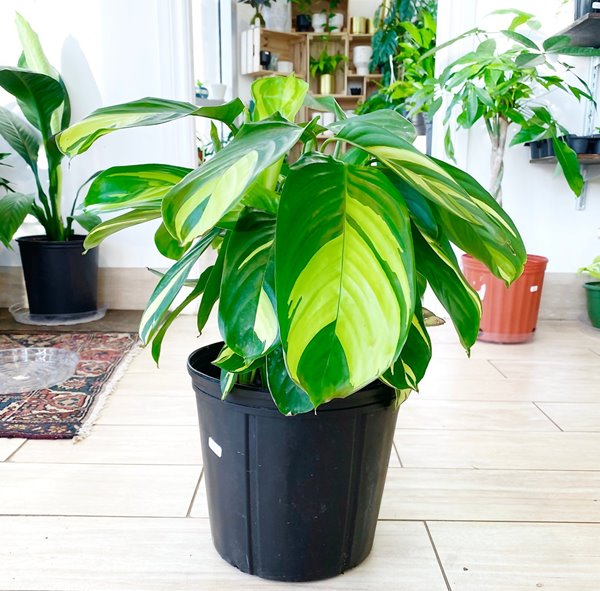How to Grow Never Never Plant In Pot | Ctenanthe lubbersiana Care
Growing Never Never Plant in pot is easy and fun! Learn all the dos & dont’s of growing Never Never Plant in this post.
Botanical Name: Ctenanthe lubbersiana
Common Names: Bamburanta, Golden Mosaic, Brazilian Snow Plant, Prayer Plant, Giant Bamburanta
Never Never plant a stunning houseplant that does not take up much space and is ideal for homes and offices. The large lance-shaped leaves are variegated with cream and golden hues and are truly a show stealer in any setting. Growing to around 3 feet in width and height, Ctenathe lubbersiana does not take up much space and is ideal for small spaces. So without further ado, here is all you need to know about growing Never Never plant in pot!
How to Grow Never Never Plant in Pot

Propagating Never Never Plant
Propagating Never Never plant is possible through both division and cuttings. Propagation from cutting is much easier as you won’t have to go through the trouble of pulling out the whole plant from the soil. You can take cutting while pruning the plant if you feel the plant has overgrown. Spring is the ideal time to propagate as the plant shows new growth. Below are the steps on how to propagate the Never Never plant from cutting.
- Take cutting below the nodes using a sharp and sterilized tool and make sure the cutting has healthy leaves.
- Wash the cutting under running water to get rid of any pesky insects that are lurking.
- Plant the cutting directly in the soil or place it in a jar filled with water. Locate the cutting at a warm spot with bright indirect light.
- Soon the roots will start to emerge, after which you can transplant the Never Never plant to the pot.
Location
Locate the plant on the windowsills, balcony, or shaded parts of the patio as it thrives in bright indirect light. Prolonged exposure to sunlight can harm the plant but it loves to bask in the morning and evening sun. Place it at the corner of your office desk or use it as a centerpiece plant in the living room; the choices are innumerate.
Soil
A good quality houseplant mix that’s well-draining and rich in organic matter works well for growing Never never plant. To make your potting mix add equal parts of potting soil, peat, and perlite. Avoid using garden soil as it can be contaminated and poor draining.
Watering
Water to keep the soil moist but not too much that it turns soggy. A good rule of thumb to water is to check when the soil becomes dry an inch below the surface before watering. Also, make sure to water at the base and not over the foliage of the Never Never plant.
Temperature
Native to the tropical regions, Never Never plant thrives in warm and humid conditions. If the temperature falls below 60 degrees F, move the plant indoors at a warm spot. Also, protect the plant from cold drafts of wind.
Never Never Plant Care

Fertilizing
Fertilize Never Never plant using a well-balanced houseplant fertilizer diluted half to its strength. The ideal time to fertilize is in the growing season, in the springs and summers. Do not overfertilize as it isn’t a heavy feeder; fertilizing once or twice a month is sufficient. Adding fish emulsion or aged compost to the soil is an organic way to enrich the soil.
Humidity
Its native to the rainforests of Brazil do in the natural habitat Ctenanthe plant is used in high humid conditions. Moderate to high humid conditions around the plant will keep it healthy and growing. Curling leaves and brown tips are the telltale signs of low humidity take measures to raise the humidity in such cases.
Pruning
Pruning helps to keep this plant in desired shape and size, helping to raise the overall aesthetics! Use pruning shears to cut back the parts of the plant that are dead or yellowing.
Pests & Diseases
Mealybugs, thrips, aphids, and other such common garden pests can cause some degree of damage to the foliage. Get rid of these pests by spraying neem oil solution or soap solution over the foliage. However, Overwatering leads to root rot, and excessive moisture can cause Botrytis!
Never Never Plant Toxicity
It’s considered a safe plant around pets and kids but can be mildly toxic. In addition, mild allergic reactions can occur if the leaves are ingested. ASPCA considers Calathea insignis non-toxic which is also the member of Marantaceae family!





